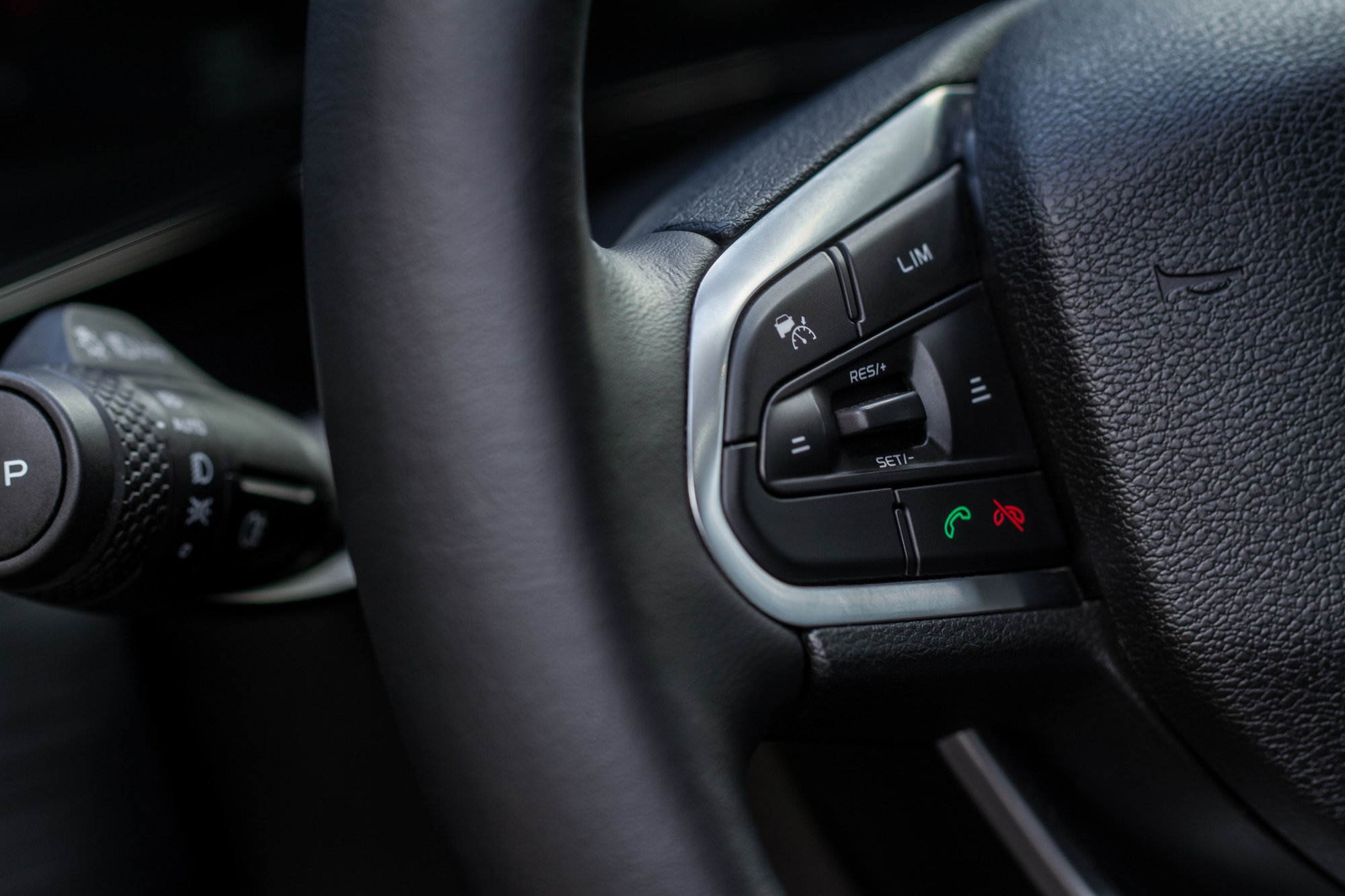What is Adaptive Cruise Control?
This advanced driver-assistance tech can modulate a car’s speed for you.
 Shutterstock
Shutterstock
Using forward-facing sensors such as radar and/or cameras, adaptive cruise control (ACC) detects a vehicle in front of you and, working in concert with the brakes and powertrain, automatically adjusts your vehicle’s speed to maintain a safe following distance. This high-tech feature is available on many new cars and can make highway driving or congested-road commuting safer and more relaxing.
How Does Adaptive Cruise Control Differ from Regular Cruise Control?
On an open road, ACC works just like regular cruise control, keeping your car at a set speed. You can increase or decrease your car’s velocity with buttons on the steering wheel, and should you wish to take over, simply press the accelerator to temporarily override the system (say, to pass someone) or tap the brakes or steering-wheel button to cancel it.
Once ACC detects a slower-moving vehicle in your path, though, it will lower your car’s speed for you, by reducing the vehicle’s power or even applying the brakes to keep your car a reasonable distance away from the vehicle ahead of you. If the slowpoke you’re following begins to move faster, ACC will tell your car to accelerate to match it up to your set speed.
Just how big of a gap does ACC leave between you and the car ahead? That depends on how quickly you’re traveling, as faster-moving vehicles need more room to stop than slower ones, and your comfort level, as many systems allow drivers to adjust the gap length via a button on the steering wheel.
Are All Adaptive Cruise Control Systems the Same?
Not all ACC systems work at every speed, but the most advanced have what’s known as stop-and-go operation. This means ACC can bring the car to a complete halt, perhaps behind a vehicle at a red light, and then get it going again as the car ahead of it moves forward. Depending on how long the stop is, you may have to push the accelerator to resume ACC. It’s a particularly useful feature in heavy traffic, as letting the car deal with road congestion allows you to relax a little.
A couple of systems—such as the one offered by Mercedes-Benz—can work with traffic-sign recognition and automatically adjust the vehicle’s speed to the posted limit as it changes. Before you let your car take over braking and acceleration, though, know that ACC typically won’t respond to pedestrians or stationary objects, and many systems struggle to make sense of motorcycles.
Which Vehicles Have Adaptive Cruise Control?
Since debuting in the U.S. in the 2000s, ACC has become widely available. Subaru now installs it in every model with an automatic transmission, for instance. But it’s not standard across the industry. Some automakers bundle ACC with other features in option packages, as Ford does in the F-150 with Ford BlueCruise, or restrict the tech to more costly trim levels, as Chevrolet does with the Equinox compact SUV. Like Wi-Fi at a high-end hotel, ACC is often an extra-cost item on luxury vehicles, too. For instance, in the lowliest GLC and GLE SUVs, Mercedes-Benz makes buyers spec a pricey package for ACC. And it’s not even available on the base Audi Q3 and Q5.
Written by humans.
Edited by humans.
 Andrew Ganz
Andrew GanzAndrew Ganz has had cars in his blood ever since he gnawed the paint off of a diecast model as a toddler. After growing up in Dallas, Texas, he earned a journalism degree, worked in public relations for two manufacturers, and served as an editor for a luxury-lifestyle print publication and several well-known automotive websites. In his free time, Andrew loves exploring the Rocky Mountains' best back roads—when he’s not browsing ads for his next car purchase.
Related articles
View more related articles